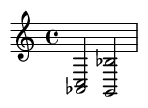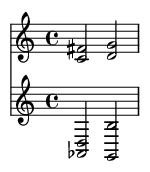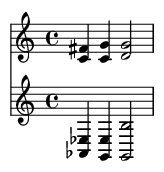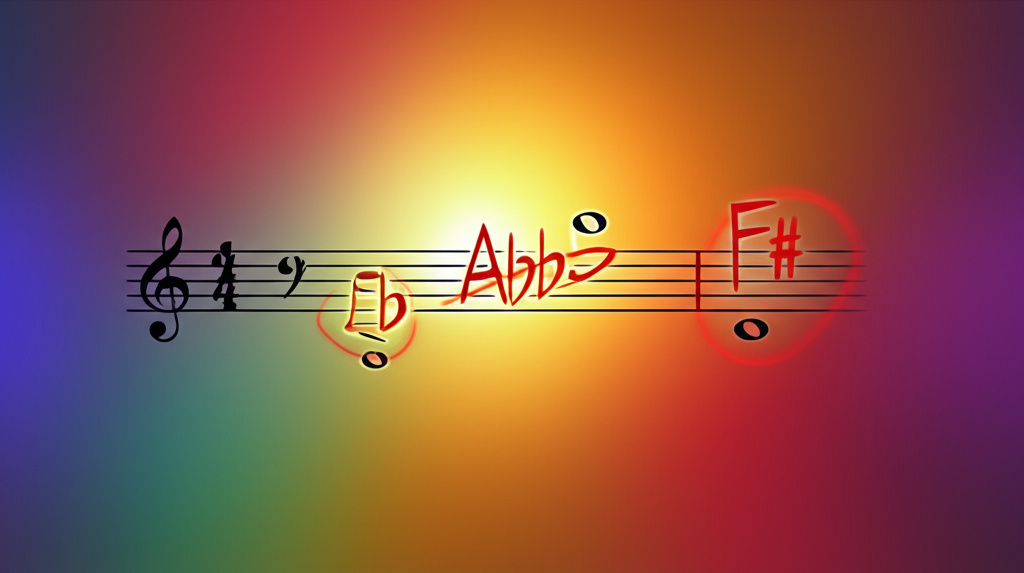Summary:
Dive deep into the world of Augmented Sixth chords, the secret ingredient for musical drama and tension. This comprehensive guide breaks down the three main types—Italian, French, and German—with clear definitions, practical spelling tips, ear training advice, and illustrative musical examples. Whether you're a music student mastering voice leading, a composer looking for expressive tools, or a curious listener, this article will empower you to understand, recognize, and appreciate one of the most powerful devices in tonal harmony.
Keywords:
Augmented Sixth, Italian Sixth, French Sixth, German Sixth, music theory, harmony, chromaticism, pre-dominant, voice leading, music analysis, cadential 6/4, common practice period, Mozart, Beethoven, Schubert.
Introduction: What is that Sound?
Ever listened to a piece of music and felt a sudden surge of tension, a moment of intense yearning that resolves with breathtaking satisfaction? Chances are, you were hearing the powerful effect of an Augmented Sixth chord. These uniquely colorful chords are a staple of the harmonic language from the late Baroque through the Romantic era and are still used by film composers today. They are not random dissonances; they are precision harmonic tools, meticulously crafted to build anticipation and guide the listener’s ear towards a powerful climax, most often the dominant chord. In this guide, we will demystify these dramatic chords, exploring what they are, how to build them, and why they remain one of the most expressive devices in a composer's toolkit.
Definition and Core Function
An Augmented Sixth chord is a type of chromatic pre-dominant chord, meaning its primary job is to intensify the arrival of the dominant (V) chord. Its signature sound and name come from the interval of an augmented sixth that forms its structural skeleton.
This defining interval is always built with two specific scale degrees:
• The lowered sixth scale degree (b6 or "Le") in the bass.
• The raised fourth scale degree (#4 or "Fi") in an upper voice.
The immense power of this chord comes from its resolution. The two notes forming the augmented sixth interval are highly unstable and pull strongly in opposite directions. They resolve by expanding outward by half step to an octave on the dominant scale degree (5 or "Sol"). So, b6 moves down to 5, and #4 moves up to 5. This contrary motion creates an incredibly forceful sense of arrival at the dominant.
The Three "Nationalities": Spelling and Classification
While the b6 and #4 are the essential ingredients, composers add one or two more notes to create three distinct "nationalities" of augmented sixth chords. These names are purely traditional and don't reflect the origins of the chords. They are almost always found with the b6 scale degree in the bass, which is why they are identified with figured bass symbols (It⁶, Fr⁴³, Ger⁶⁵).
These chords most naturally occur in a minor key but are frequently used in major keys by borrowing the b6 and b3 from the parallel minor.
| Type | Scale Degrees | Notes in C Minor | Notes in C Major (borrowed) |
|---|---|---|---|
| Italian Sixth (It⁶) | b6, 1, #4 | Ab, C, F# | Ab, C, F# |
| French Sixth (Fr⁴³) | b6, 1, 2, #4 | Ab, C, D, F# | Ab, C, D, F# |
| German Sixth (Ger⁶⁵) | b6, 1, b3, #4 | Ab, C, Eb, F# | Ab, C, Eb, F# |
*Note: In a major key, the b6 and b3 (for the German 6th) are borrowed from the parallel minor key.
Examples in C minor
Let's see and hear how each chord is built and resolves. The following examples are in C minor and show the standard voice leading for each type resolving to the dominant (G major).
Example 1: Italian Sixth (It⁶ → V)
The simplest version, with three notes. The tonic note (C) is typically doubled to create a four-part texture. Notice the Ab in the bass moves down to G, while the F# in the soprano moves up to G.

Example 2: French Sixth (Fr⁴³ → V)
The four-note French sixth adds the second scale degree (D). This creates two tritones within the chord (Ab-D and C-F#), making it particularly spicy and dissonant.

Example 3: German Sixth (Ger⁶⁵ → i⁶⁴ → V)
The richest and most common version adds the lowered third (Eb). A direct resolution to V would create parallel fifths (Ab/Eb → G/D). To avoid this, composers typically resolve the Ger⁶⁵ to a cadential tonic 6/4 chord before proceeding to the true dominant.

How to Recognize Augmented Sixth Chords by Ear
Ear training is crucial for internalizing music theory. To spot an augmented sixth chord, listen for:
• The Stretch and Snap: The defining sound is that of two voices being stretched apart before snapping satisfyingly into place. Listen for the bass voice moving down by a half step to the dominant while another voice leaps up by a half step to the same note an octave higher.
• Intense Pre-Dominant Function: It sounds more urgent and intense than a standard pre-dominant like ii or IV. If you hear a chord that feels like it desperately needs to resolve to V, it might be an augmented sixth.
Famous Examples in the Repertoire
Composers use these chords to create unforgettable moments of high drama.
• Ludwig van Beethoven, *Piano Sonata No. 8, "Pathétique"*, Op. 13, Mvt. 1: In the slow *Grave* introduction, Beethoven uses a powerful German sixth chord (in m. 4 and again in m. 10)
to create immense weight and pathos before launching into the fiery *Allegro*.
• Franz Schubert, *Erlkönig*, D. 328: To set the Elf King's terrifyingly seductive line, "Ich liebe dich, mich reizt deine schöne Gestalt" (mm. 80-82), Schubert uses a German sixth. The chord adds a sinister, unsettling color to what is superficially a declaration of love.
• Wolfgang Amadeus Mozart, *Requiem in D minor*, K. 626: In the "Confutatis," Mozart masterfully uses augmented sixth chords to depict the anguish of the damned, creating extreme harmonic tension in the sections for the lower voices.
Fun Facts & Advanced Concepts
• Mistaken Identity: The German sixth chord (e.g., in C minor: Ab–C–Eb–F#) is enharmonically identical to a dominant seventh chord in the key of Db major (Ab–C–Eb–Gb). Its spelling and, most importantly, its resolution define its function. Composers exploit this ambiguity to pivot smoothly to distant keys.
• The Power of Two Leading Tones: Why does the augmented sixth resolve so satisfyingly? Because it contains two leading tones pointing to the same destination! The #4 is the standard leading tone to the dominant (5), and the b6 acts as a "downward-resolving" leading tone to the dominant. Both voices pull inexorably towards the same pitch class.
• What's in a Name? The national names (Italian, French, German) are purely pedagogical and were likely coined in the 19th century by theorists. They do not mean the chord was invented or used exclusively in that country.
Conclusion: The Sound of Drama
The Augmented Sixth chord is far more than a collection of notes; it is a narrative device. From the lean Italian to the dissonant French and the rich German, each variant offers a unique shade of harmonic color. Yet all share a common purpose: to build tension with chromatic intensity and resolve it with powerful satisfaction. It is the sound of longing, of suspense, of dramatic inevitability. By understanding how this chord is built, how it functions, and where to listen for it, you gain a deeper appreciation for the art of composition and the profound emotional language of music. The next time you listen to a symphony, opera, or film score, keep your ears open. Can you spot that moment of extreme harmonic stretching? You might just be hearing the magic of an augmented sixth.
References:
Aldwell, E., & Schachter, C. (2018). *Harmony and Voice Leading (5th ed.)*. Cengage Learning.
Harrison, D. (1994). *Harmonic Function in Chromatic Music: A Renewed Dualist Theory and an Account of Its Precedents*. University of Chicago Press.
Laitz, S. (2015). *The Complete Musician: An Integrated Approach to Theory, Analysis, and Listening (4th ed.)*. Oxford University Press.
Historical Context and Musical Significance
Augmented sixth chords emerged during the Baroque era but reached peak usage in the Classical and Romantic periods (c. 1750-1900). Composers like Mozart, Beethoven, and Schubert exploited their intense dissonance to heighten dramatic moments – particularly in opera recitatives, transitional passages, and cadential preparations. The chord's significance lies in its unique intervallic structure: an augmented sixth between ♭6 and ♯4 that must resolve outward to an octave (typically the dominant). This creates magnetic voice-leading tension unmatched by diatonic chords. Historically, it bridged modal Phrygian cadences with tonal harmony while enabling chromatic expansions. The chord's inherent instability made it ideal for expressing longing, shock, or impending resolution in works like Mozart's "Don Giovanni" (Commendatore scene) and Schubert's "Der Erlkönig."
Progressive Exercises
Beginner
Spell augmented sixth chords in major/minor keys from given tonics (e.g., Italian 6th in C minor: A♭-C-F♯). Resolve to dominant triads following strict voice-leading rules:
- ♭6 and ♯4 expand to 5
- Other voices move stepwise to nearest chord tones
Intermediate
Insert appropriate augmented sixth types into harmonic progressions. Example: iiø6/5 → [Ger+6] → V → i in D minor. Analyze voice exchanges in German 6th → cadential 6/4 sequences.
Advanced
Compose modulatory passages using augmented sixths as pivots (e.g., reinterpret German 6th in C major as dominant 7th in E major). Transform German sixths into V7 chords via enharmonic respelling (F-A♭-C-D♯ = F-A♭-C-E♭).
Ear Training Tips
Recognize augmented sixths by their "gravitational pull" toward the dominant. Distinguish types by inner voices:
- Italian: Hollow sound (no fifth, only augmented sixth + third)
- French: Clash between ♯4 and 2 (e.g., F-A-B-D♯ in C minor)
- German: Major triad quality plus augmented sixth (e.g., F-A♭-C-D♯)
Practice with Beethoven's "Pathetique" Sonata (I, m. 132 – German 6th) and Debussy's "Prelude to the Afternoon of a Faun" (French 6ths). Use teoria.com interval drills focusing on A♭-F♯.
Common Usage in Different Genres
Classical
Primarily as pre-dominants before V or cadential 6/4. Mozart's "Le Nozze di Figaro" (Act IV Finale) uses Italian sixths for comic tension.
Jazz
Reinterpreted as tritone substitutions (e.g., Ger+6 = D♭7, resolving to C major). Hear in John Coltrane's "Giant Steps" (enharmonic pivots).
Film Music
Heighten climactic moments: Bernard Herrmann's "Psycho" shower scene uses French sixths for dissonant stabs. Italian sixths underscore romantic yearning in John Williams' themes.
Online Resources
- David Kulma's Open Music Theory (Augmented Sixth chapter)
- Jacob Gran’s YouTube analysis of Wagner's augmented sixth usage
